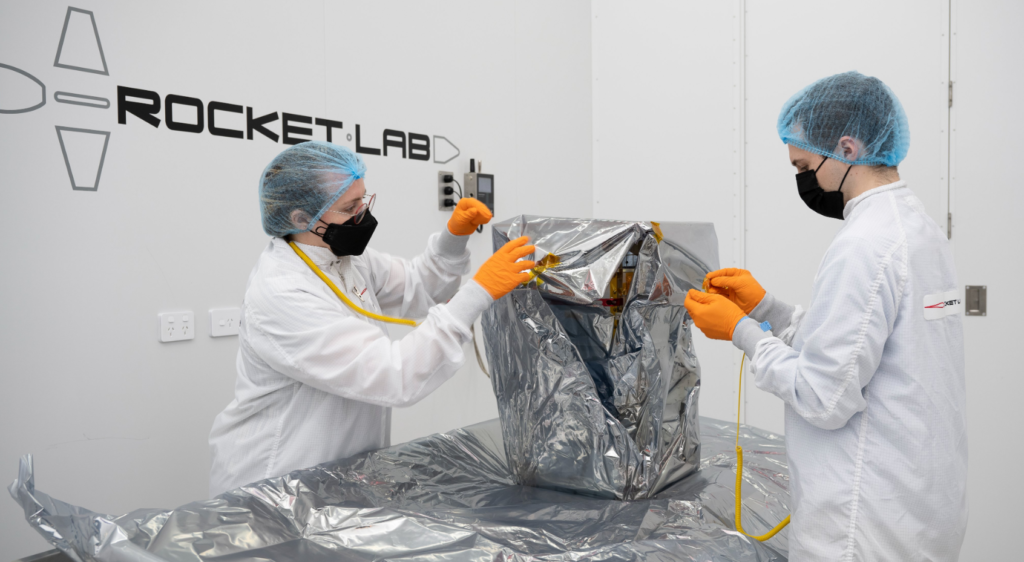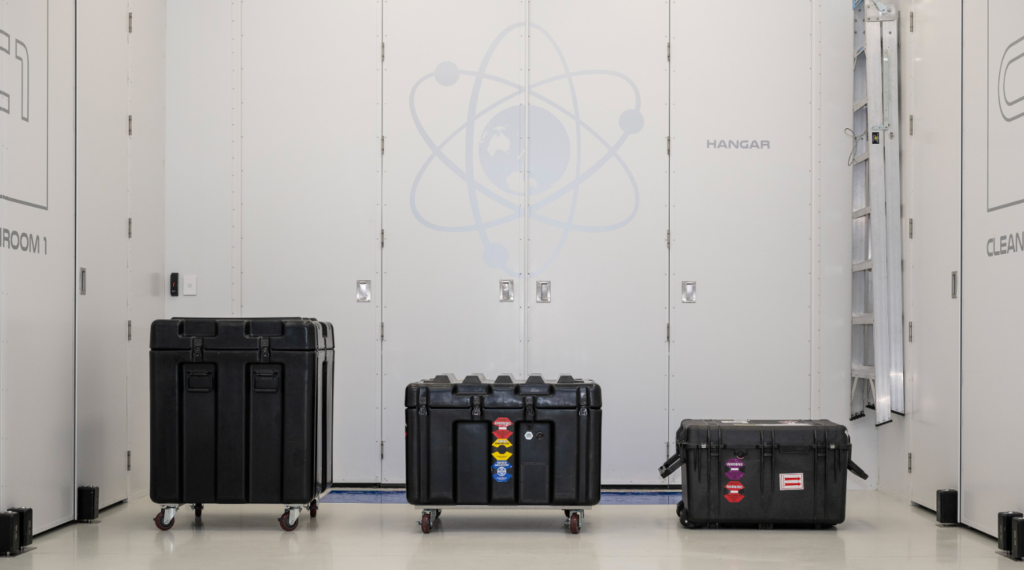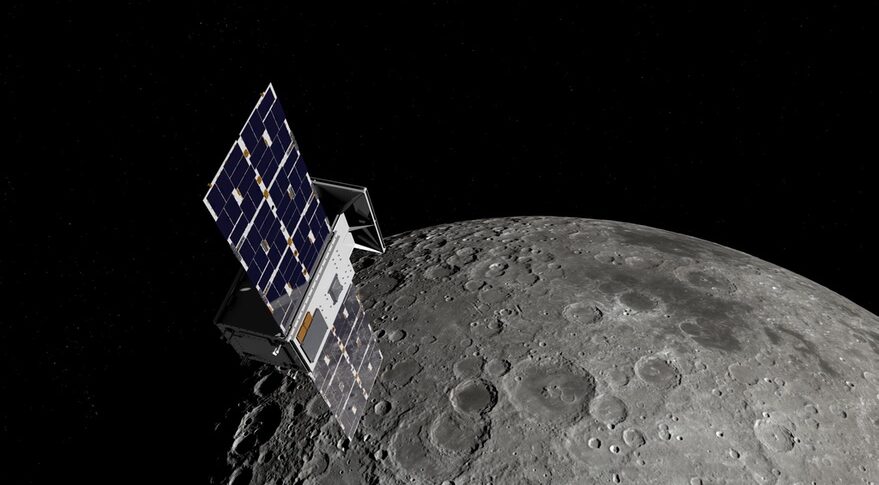
More Updates As Rocket Lab Gets Closer To Reaching The Moon
The Moon is a complex and unique environment that offers a lot of opportunities in the future. NASA, Rocket Lab, and many other agencies and companies are very interested in the celestial body and how they can learn from it. However, at around a quarter-million miles away, the Moon is by no means easy to access, especially for a small lift launch vehicle.
This being said, in only a few weeks Rocket Lab is expected to launch an Electron rocket paired with a Photon Spacecraft to deliver a payload to lunar orbit. This would mark an impressive milestone for the company as they continue to work on more ambitious plans. In the past week, Rocket Lab along with NASA have provided a few more updates on the launch date and general progress of the mission.
CAPSTONE is intended to help reduce risk for future spacecraft by validating innovative navigation technologies and verifying the dynamics of this halo-shaped orbit. This mission is very important for many reasons including the future of landing humans back on the Moon. Here I will go more in-depth into the recent updates, expected launch date, and what to expect when it launches.
Recent Updates

With the launch to the Moon only a few weeks away, companies like Rocket Lab are very busy working on all the final steps to prepare for the mission. Over the past week they have continued to provide updates on its progress towards the mission. This began 5 days ago when Rocket Lab tweeted about the goal and purpose of the mission. Specifically, on May 17th they tweeted saying, “Before NASA’s Artemis astronauts go to the Moon, CAPSTONE will test a unique lunar orbit that has never been flown before. We are so proud to be working with @NASAAmes, @AdvancedSpace and @TerranOrbital to support humanity’s return to the Moon.” Not long after on the 18th, NASA tweeted mentioning, “#CAPSTONE has arrived… to Launch Complex 1 in New Zealand! With launch rehearsal complete, and payload integration about to begin, it’s almost time to go to the Moon!” In this case, the CAPSTONE spacecraft safely arrived at the Rocket Lab Launch Complex 1 (LC-1) on the Mahia Peninsula of New Zealand ahead of its launch. From this point, Rocket Lab completed the launch rehearsal, and with the spacecraft now at the launch site, will begin payload integration with the Electron rocket and Photon spacecraft bus.
Soon we would receive more updates on this progress as time went on. Next, on the 19th, Rocket Lab tweeted highlighting, “Payload integration is a delicate ballet coordinated by the dedicated teams at @RocketLab, @AdvancedSpace, @TerranOrbital and @NASAAmes. Excited to reach one of the final steps before this historic launch!” This included an image of the payload integration process inside a clean room. Only hours later, they provided another update that said, “The best kind of unboxing. CAPSTONE arrives at Launch Complex 1 ready for integration with Photon and Electron ahead of the journey to the Moon.” This tweet included a few images, one of which showed multiple crates holding the CAPSTONE payload which is about the size of a microwave. Finally, just two days ago on the 20th, Rocket Lab tweeted saying, “With wet dress rehearsal now complete and payload integration getting underway, we’re targeting no earlier than June 6 UTC for the CAPSTONE launch! Final readiness checks are underway on the new systems for this mission, including our very first lunar Photon spacecraft.” The original launch date was earlier however it has been pushed back a few days to ensure everything is ready and goes according to plan. On this same day, NASA also chipped in mentioning, “LAUNCH UPDATE: #CAPSTONE will be Moon-bound no earlier than June 6 UTC. @NASA, @AdvancedSpace, & @RocketLab continue to prepare for launch while conducting final mission readiness checks.” This all leads up to today were we should be expecting a few final updates from now until the mission in early June.
More About CAPSTONE

Now that we know all of the recent news and updates regarding CAPSTONE, we can focus on the mission itself, the partners involved, and what to expect in the near future. If everything goes according to plan, In June 2022, Rocket Lab will launch a CubeSat to the Moon. This historic pathfinding mission supports NASA’s Artemis program which will return humans to the surface of the Moon. Using its Electron rocket and new Lunar Photon upper stage, Rocket Lab will inject the Cislunar Autonomous Positioning System Technology Operations and Navigation Experiment (CAPSTONE) CubeSat to a highly efficient transfer orbit to the Moon. CAPSTONE is owned and operated by Advanced Space in Westminster, Colorado, for NASA. CAPSTONE’s primary objective is to test and verify the calculated orbital stability of a Near Rectilinear Halo Orbit around the Moon, the same orbit planned for Gateway.
Advanced Space is a major partner in this mission as they worked to develop and operate CAPSTONE. They point out that, like many missions, CAPSTONE started with a question: what does a safe, sustainable future on the Moon look like? How do we bridge the gap between today and that future? From here, Advanced Space began to develop CAPS™, and NASA moved out on its plans to land the first woman and next man on the Moon. The two paths led to common ground and resulted in the pursuit of a rapid technology demonstration that will provide valuable experience for future efforts headed to the Moon. CAPSTONE went from an idea to a NASA funded contract in mid 2019. From there, Advanced Space describes, the clock was ticking – while the average mission can take years to design, develop, manufacture, and launch, CAPSTONE is going at a breakneck pace from contract to launch readiness. This is possible through dedicated efforts from Advanced Space, close collaboration with customers and suppliers, and a laser focus on the core drivers of schedule and capabilities. The rapid timeline benefits from NASA investment and expertise as well as commercial investment from key suppliers. Launching in 2022 on a Rocket Lab Electron, CAPSTONE is expected to be the first cislunar small spacecraft. After several days of getting into position at Low Earth Orbit (LEO), the CAPSTONE spacecraft will separate from the launch vehicle upper stage and begin its journey to the Moon. This will be the first mission for Electron beyond LEO and the CAPSTONE spacecraft will be the only payload launched on this flight. The injection accuracy is a critical start to the next phase of the mission.
After the launch is the transfer portion of the mission. Transfer starts out with a critical 72 hours where the spacecraft will turn on, boot up, get a navigation solution, and execute its first maneuver. This start to the transfer is very important, from this key beginning the transfer to the Moon will leverage a highly efficient trajectory that utilizes solar gravity to get to the Moon while requiring very little fuel. The transfer is called a Ballistic Lunar Transfer, from injection by the launch vehicle it will travel to approximately 1.5 million km from the Earth. During the transfer, the spacecraft will take images using the on-board camera and will execute several maneuvers to correct for errors and target a precise orbit insertion at the Moon. This transfer approach has been used by spacecraft in the past and is likely to be used by many missions in the future. Advanced Space specializes in these highly dynamic orbit designs and operations which have enabled CAPSTONE and will support future programs as well. In terms of the destination, the target orbit at the Moon for CAPSTONE is a Near Rectilinear Halo Orbit (NRHO). Entering into this orbit will require a critical maneuver by the spacecraft. A critical maneuver means that it must be executed to achieve lunar orbit and there is very little margin for error. The same NRHO is the planned destination for NASA’s future lunar orbiting outpost known as Gateway. This unique orbit has many beneficial attributes to support sustainable architectures for exploring, developing, and settling the Moon. NRHOs are only marginally stable, so CAPSTONE will perform a small station-keeping maneuver about once a week. While in this orbit the CAPSTONE spacecraft and the team at Advanced Space will demonstrate operational performance and confirm simulations to support planning for future NASA missions.
Finally, Advanced Space highlights that “The future of humanity is in the stars, and though none of us can begin to guess what that future will look like in the end we can start to place the pieces that will enable it. The versatility of the CAPSTONE demonstration offers a variety of paths forward to further our exploration of the Moon and beyond. Advanced Space aims to support additional missions flying to the Moon in a variety of ways, such as providing a navigation node to surface operations.”
Conclusion
After around 50 years since putting humans on the Moon, this is set to change not very long from now. This upcoming CAPSTONE mission is a significant early step as NASA works to send more astronauts to the surface. This also marks a big milestone for Rocket Lab as they attempt to reach the Moon with a small lift launch vehicle. We will have to wait and see how it progresses and the impact it has on the space industry.
